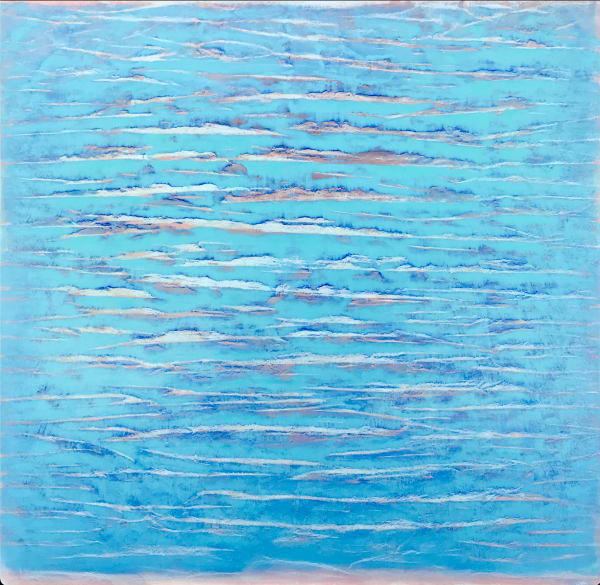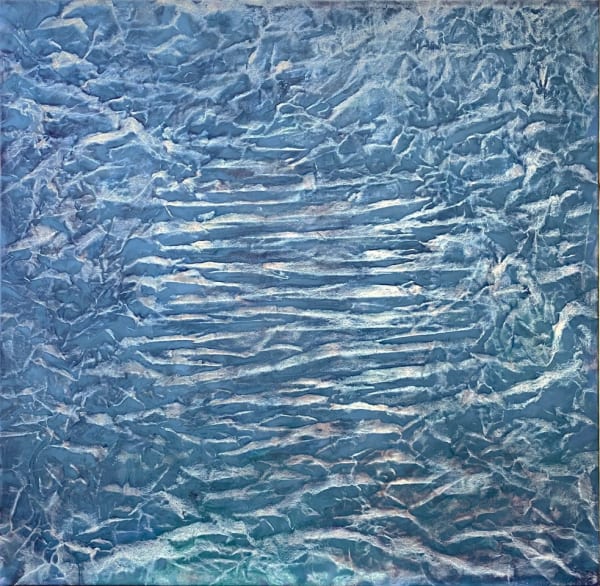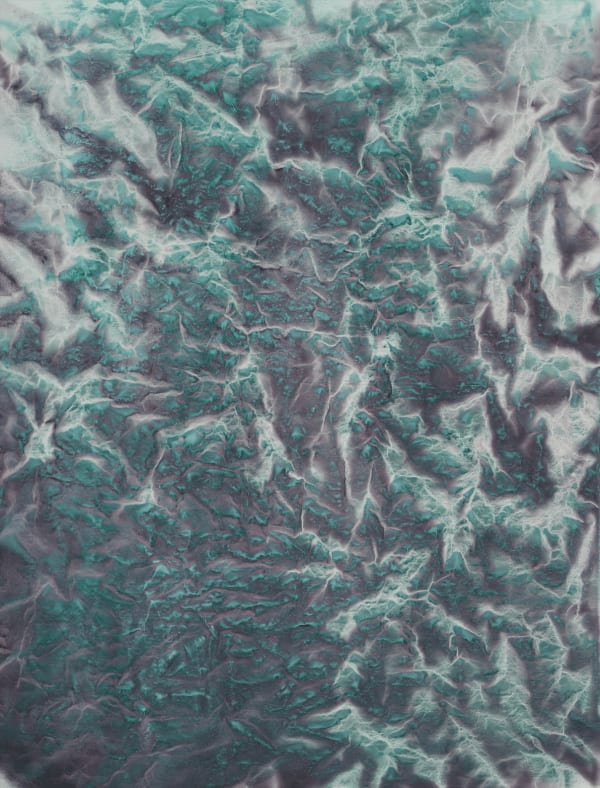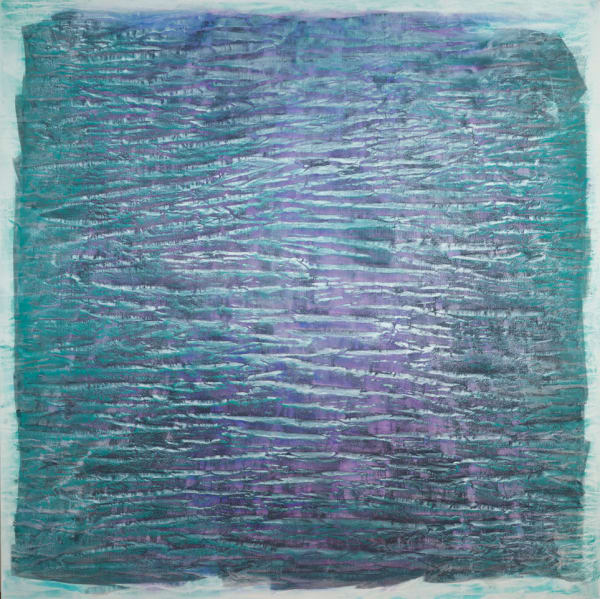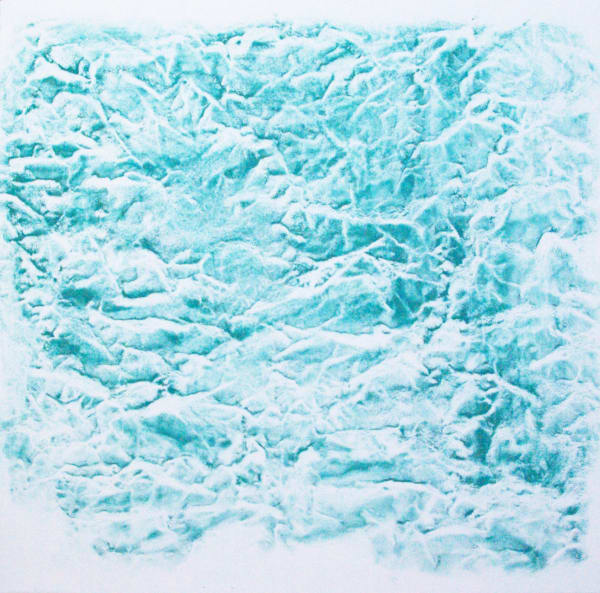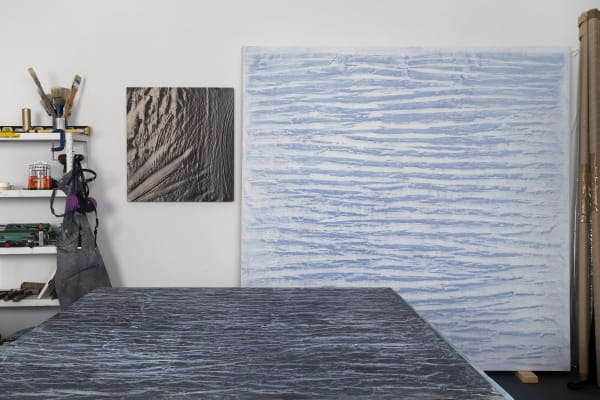VICKY COLOMBET
With a career spanning over three decades, Vicky Colombet’s abstract paintings, works on paper, prints, fine art photography, and architectural glass projects exist in conversation with various art historical movements—from traditional Chinese Painting to Abstract Expressionism. Raised in Paris, Colombet whose mother was of Filipino descent spent her childhood traveling extensively with her parents across Southeast Asia and India. Eastern thinking became an important part of Colombet’s perception of the world along with her commitment to Buddhism. She is deeply inspired by philosophy, physics and poetry. The writings and beliefs of Schopenhauer and the Sublime and of Emerson and Thoreau about nature are aligned with the thoughtful approach to the Middle Way principles of living and are fully intertwined with her art. Colombet studied at the Sorbonne and began her career as a graphic designer and writer before being invited to study in the Paris atelier of Henri Dimier (1899-1986). They shared an interest in the metaphysical beliefs in what lies beyond, underlies or transcends the physical nature of the world and reality. This was practiced in the atelier of Dimier by way of a deconstructed process of grinding and mixing pigment with various solvents (oil, copal, plaster and water) and is the grinding process she still uses today. Colombet experiments with the weights of pigments, their type of granulation, chemical response, their specific vibrations and steps for grinding. For Colombet, pigments are the particles and forces in the universe as she creates parallels of energy between the particles and brush strokes and physical movement. The use of pure pigment also gives a unique vibration and emotional resonance. Colombet’s meditative paintings reference the natural world and landscapes as a source of inspiration. One that she wanted to communicate by unconventional connections. The illusion of this topography in Colombet’s paintings gives the impression of a gestural and impasto surface, but the work is totally flat and smooth. There is an ambiguity at what we see, and an uncertain scale—microscopic or macroscopic—a magnified particle, a planetary or interstellar landscape. They are sublime in their complexity; yet, she attempts to interpret the idea that the absolutely simple contains a universe, that what is folded doesn't end, and that what we see is in a continuous state of becoming. Colombet says, “It is such a precise process that every step, every stroke of the brush, every gesture is decisive. There is a moment where it almost seems as if even my breath interferes in the process.” A new landscape appears: a different geography. A geography that is more abstract and more mysterious. In my work, I’m often not referring to a particular landscape per se, but rather trying to create a visual catalyst that prompts our thinking of places and how we imagine them. I’m much more interested in the construction of ideas about landscape. It is a rich, subjective, internalized exercise that can function almost like poetry.” These are intuitive paintings concerned about the origins of the earth. Colombet is currently working on a series about Antarctica that she began in 2014. Seeing the melting of the pristine ice, its exposed sediments of dirt and mud with the disappearing ice sheets and glaciers concerned Colombet so much that she felt by doing a series of work on Antarctica she might be able to touch people in a more direct way than that of scientific opinion. With the Antarctica series, Colombet creates visuals and abstractions evoking sensory memory of the ice, the cold, the purity of the light and the dynamic forces of nature. To translate a continuous state of becoming, she has been using the topographical marks of the canvas to recreate the feel of the ice breaking and of the formations of glaciers. Micro-perceptions for an ever-changing landscape: the pigments’ particles seen up close define a micro world-within-the-world, as it keeps sliding toward the light and perhaps into nothingness. "Pleasure from knowledge of the observer's nothingness and oneness with nature", which for Schopenhauer was the ultimate definition of the sublime. The beauty of the ice is disappearing before our eyes, endangering the wild life as well as the entire planet. Colombet (b. 1953) has lived and maintained studios in Paris, the South of France, Barcelona and the Cévennes before finally settling in New York City, where she has a studio at the Elizabeth Foundation for the Arts. Colombet now divides her work time between her studios in New York City, the Hudson Valley and Paris. Vicky Colombet is the Recipient of the Esther and Adolph Gottlieb Foundation Grant (2001) and Pollock-Krasner Foundation Grant (2014). A member of the Elizabeth Foundation for the Arts in Manhattan since 2004, she became an American Citizen in 2013.
-

Vicky COLOMBET
Eau et Lumière 26 Oct - 2 Dec 2023> DUTKO / Quai Voltaire La Galerie Dutko présente du 26 octobre au 2 décembre les œuvres récentes de l’artiste franco-américaine Vicky Colombet. Ce troisième solo-show réunit autour de la...Read more -

A COLOR SHOW
Exposition collective 22 Sep - 19 Nov 2022Exposition collectiveRead more


